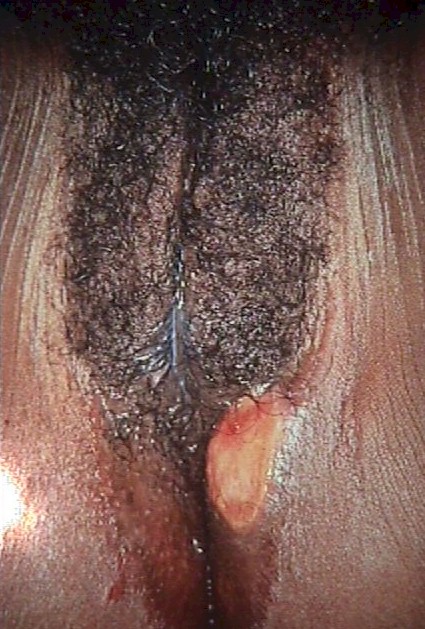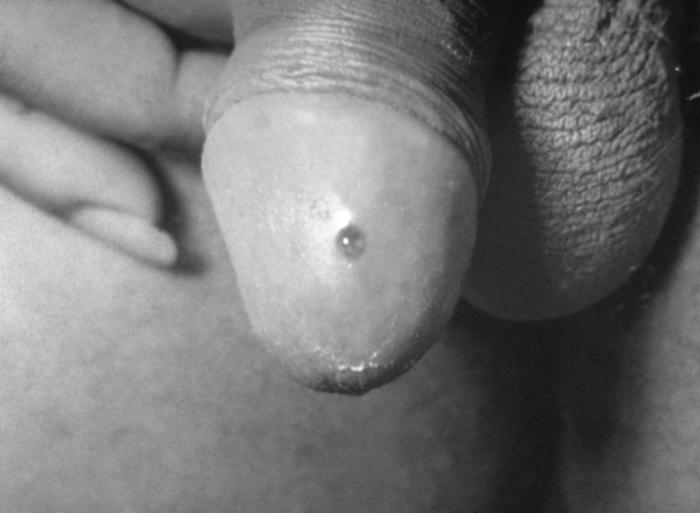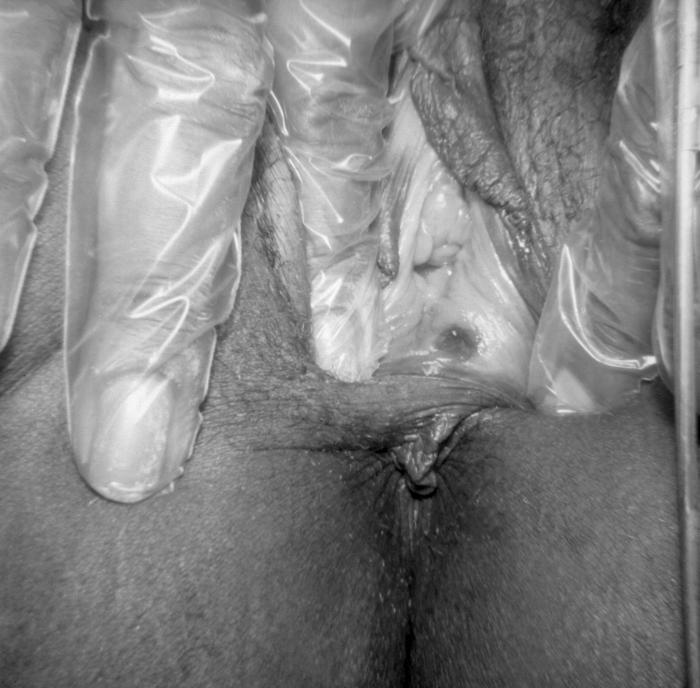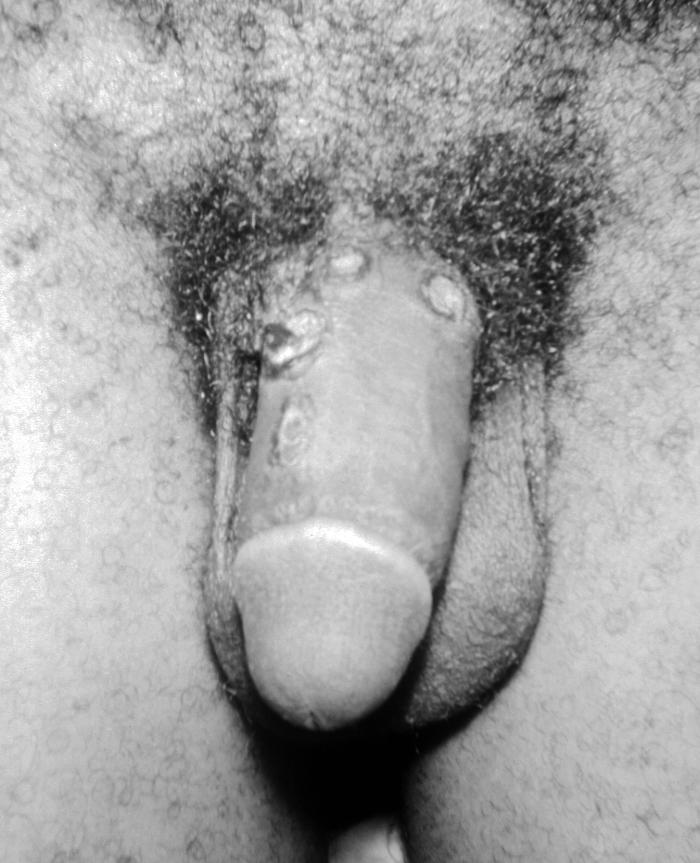Primary Syphilis
The distinguishing feature of primary syphilis is a painless ulcer on
the vulva, vagina or cervix.
The ulcer:
-
Is non-tender.
-
Has a well-defined border.
-
Has a smooth base.
-
Starts as a macular lesion, forms a central papule, then erodes to
form an ulcer crater.
-
Is associated with enlarged, firm, mobile, non-tender regional
lymph nodes.
Examination of surface scrapings of lesion under darkfield microscopy will show
the typical spirochetes. Serologic test for syphilis (VDRL, RPR) will be positive.
Optimal treatment is:
But for those allergic to penicillin, you may substitute:
-
Doxycycline 100 mg orally twice a day for 2 weeks, or
-
Tetracycline 500 mg orally four times a day for 2 weeks.
-
Ceftriaxone 1 gram
daily either IM or IV for 8--10 days (possibly effective).
-
Azithromycin 2 grams
PO once (possibly effective).
If the patient is pregnant, tetracyclines should not be used. Should the pregnant
patient also be allergic to penicillin, desensitization is recommended by many, but
circumstances may not allow for that. Of primary importance is that sufficient antibiotic gets across the placenta and to the fetus.
If not, fetal
syphilis will be insufficiently treated.
Within 24 hours of treatment, you may observe the Jarisch-Herxheimer
reaction in patients. This reaction consists of fever, muscle aches and
headache and may be improved by concurrent treatment with antipyretic medication.
Both the patient and her sexual partner(s) need treatment. Otherwise,
she will be re-infected, even if the initial treatment is successful.
Further, syphilis, untreated, ultimately can lead to permanent neurologic
injury and death, so full treatment of all sexual partners is very
important.
Long term followup is needed to make sure that the syphilis is
completely gone from the patient and her sexual partner(s). The means to
do that is complicated and current CDC recommendations are best followed.
CDC Treatment Guidelines
|





